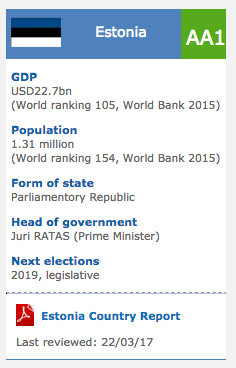Environment in Kenya
-
KENYA, 2017/03/12
At least 1.7 million children under the age of five die each year due to unhealthy or polluted environments, a statement has revealed.
The World Health Organization (WHO) statement released on Monday revealed that a quarter of all world deaths of children under five are caused by dirty and polluted environments inclunding dirty water and air, second-hand smoke and a lack of adequate hygiene.
In Kenya, according to a United Nations statement of 2016 titled "Actions on Air Quality", at least 14,300 Kenyans die each year from health conditions which can be traced back to indoor air pollution with pneumonia cited as one of the biggest killers associated with air pollution.
WHO Director-General Margaret Chan said that lack of clean air and water can lead to fatal cases of diarrhoea, malaria and pneumonia. This as well exposes children to harmful chemicals through food, water, air and products around them.
-
KENYA, 2016/09/05
The last time the lions charged through Simon Saigilu’s village, he was ready. He jumped out of bed with a flashlight and a spear, emitting a high-pitched scream that was the closest thing anyone here had to an alarm.
He’d had time to practice. Each month or two, the lions appeared, next sneaking through the fence that runs between the village and Nairobi National Park, at the edge of this city of 3 million. The barrier was supposed to be electrified, but it wasn’t. The animals — inclunding the park’s 35 lions — were supposed to remain in the park, but they didn’t.
-
KENYA, 2016/07/11
A minibus belches black smoke; the lorry behind it in the traffic jam billows white fumes. Eyes smart in the smog as diesel gases from thousands of 10 and 15-year-old vehicles fill Nairobi’s hazy evening air, adding to pollution levels that are “beyond imagination”, according to one resident. This jam could last for one, three, even five hours – last year, one stretched for 30 miles.
We could easily be in Cairo, Lagos or an extra African megacity, but this is the eight-lane Mombasa Road in Kenya’s capital – a permanently clogged artery in a metropolis where the number of vehicles doubles each six years.
-
BOTSWANA, 2016/01/05
A community near the famed Serengeti national park in Tanzania is enlisting the help of bees to reduce escalating tensions with elephants that enrage locals by trampling upon their crops.
A fence made of beehives is being constructed around a one-acre farm close to the Ngorongoro conservation area as part of the pilot project to see if the buzzing bees will deter elephants that stroll on to cropland.
It’s hoped that the “bee fence” concept, which has by presently been deployed in Kenya and Botswana, will help reduce conflict in northern Tanzania, which has become a hotspot for clashes between humans and elephants.
-
BOTSWANA, 2015/11/17
One lesson that has been well and truly learned in nature conservation is that for policies to be really effective nations have to collaborate to address common problems.
Within the UN system it is as well recognized that this applies to the different Programmes, Conventions and Agreements set up over the years. That each of these bodies has a distinct niche and a clear role does not justify a bunker mentality. By synergizing, cooperating and collaborating they can find common cause with natural allies and seek compromises with those whose agendas do not necessarily match their own.
AEWA, the Agreement on the Conservation of African-Eurasian Migratory Waterbirds, is a prime example of an organization that embodies this approach.
-
KENYA, 2015/10/28
Kenya on Friday launched a mobile application to monitor forests in order to curb illegal logging.
Kenya Forest Service (KFS) Director Emilio Mugo said the smart phone application will enable users to statement illegal activities in the forest.
"We expect the app to compliment the efforts of law enforcement officers to conserve Kenya's forests," Mugo said during the 20-year celebrations of the Kenya Forest Working Group (KFWG).
The mobile system is a joint initiative of the KFWG and the University of Nairobi.
-
BOTSWANA, 2015/07/21
Hunting has long been a highly controversial activity, whether as a sport (leisure or recreational), for commercial purposes or if done for cultural reasons. African nations that legalise hunting activities experience scrutiny around their conservation efforts, and how much money they make from it.
Trophy hunting, which is offered in 23 sub-Saharan African nations, generates an estimated US$201 million per year. Out of the 23 nations taking part in legal hunting activities, Tanzania, Mozambique, Namibia and South Africa have the majority effective controls and the highest levels of transparency.
-
KENYA, 2014/11/19
The International Union for Conservation of Nature (IUCN) is the major professional world conservation network, and considered a leading authority on the environment and sustainable development. They are currently developing a Green Inventory of Protected Areas, which is the only world standard of good practice for protected areas.
IUCN aims to recognize and promote success in managing some of the majority precious natural areas on the planet – and Ol Pejeta is one such area and the only one in Kenya as far as could be ascertained. IUCN selected the Ol Pejeta Conservancy as one of only two wildlife conservancies in Africa to be listed on their “Green Inventory of Protected Areas,” a very significant honor and recognition for the sterling work done on the conservancy vis-a-vis rhino conservation but as well, notably, for their incomparable approach of having wildlife and livestock coexist in harmony.
-
KENYA, 2014/07/10
General Ban Ki-Moon has hailed Kenyan President Uhuru Kenyatta and the Government for supporting the world effort in environmental conservation.
'Your leadership made a lot of difference to help make our environment additional sustainable,' he said.
Speaking in Nairobi while closing the inaugural United Nations Environment Assembly (UNEA) late Friday, Ban thanked the Kenyan Government and the people for supporting the United Nations in Kenya. 'We are proud to work with you,' he said.
'Your journey dates back additional than four decades to at the same time as the General Assembly established the United Nations Environment Programme in the wake of the 1972 UN Conference on the Human Environment,' he said.
-
KENYA, 2014/06/02
The Kenyan government has done itself and wildlife protection in the country no favor at the same time as in a knee-jerk reaction not too different from the recent FCO anti-travel advisory, it banned the use of UAVs aka drones to survey conservancies and private game reserves, citing once again obscure security reasons for the ban.
A regular conservation source from Nairobi was swift to denounce the decision as paranoid and only benefitting poachers: “Like the Brits overreacted two weeks ago with their ban on travel to parts of the coast, so did our government here.
We were all waiting to see how the trials on Ol Pejeta were going before deciding to move towards such surveillance equipment ourselves, but from what we hear, government has suddenly pulled the plug on this. I have no idea how much money Ol Pejeta has invested in this technology, but the fact that KWS [Kenya Wildlife Service] as well talked of going that way and that other conservancies were closely watching until initial results were out. speak for itself.







